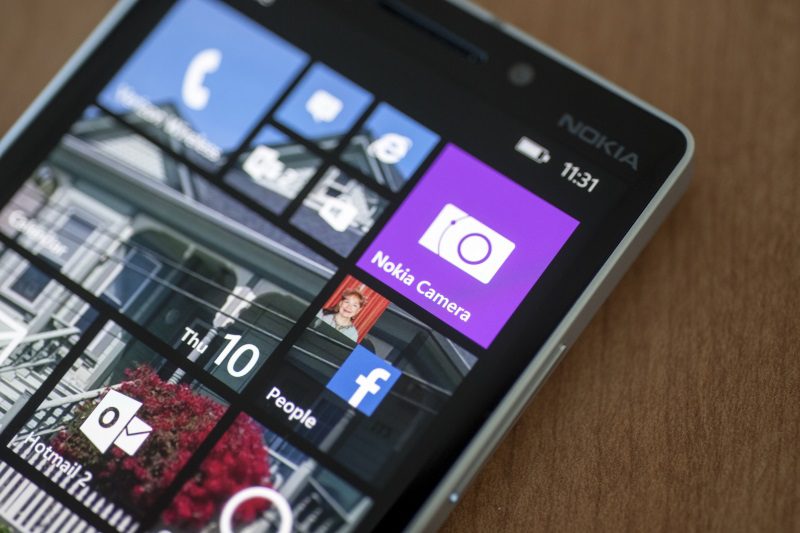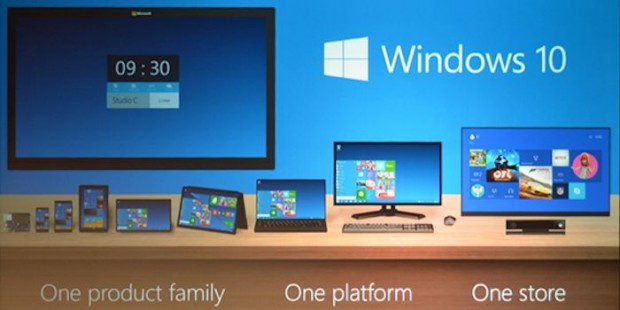On Universal Apps and Developers
7 min. read
Published on
Read our disclosure page to find out how can you help MSPoweruser sustain the editorial team Read more

There’s been a lot of hype following the launch of universal apps with Windows Phone 8.1. For consumers, you only need to buy an app once to have it on your PC or phone and potentially Xbox as well. For developers, you’d have the ability to write an app once and have it everywhere as well as access to the combined user base of PC and Windows Phones. It seems like a win-win all around. The keyword being “seems”. Some Windows Phone users have wondered why Android and iOS devs aren’t rushing over in droves to develop for Windows or barring a mass exodus, why big companies such as Facebook and Twitter still give Windows a virtual finger. Well, here’s why.
The first and major reason is user base and market share. People often trot out the statistic that Windows has 90% of the OS market. That’s not entirely true, Windows has 14 percent of the overall OS market as Microsoft has acknowledged. The majority of apps cover the other 86% of the market, so why should devs be bothered about Windows?
“Honestly? I think Windows as a platform is dead. Certainly for new development, I’d either develop for the web, or Android/iOS.
Sure, there may be some niches where windows development still matters, but for most consumer-oriented stuff, there’s just no point anymore.”
“I previously worked at a very large corporation that had a windows mobile app (which was also heavily marketed), our tracking showed that people on windows mobile devices preferred to use our product through their browser rather than using the app (they would just go to our mobile website). Meanwhile people who were on iOS or android tended to use the app more than the site.
I am now at a much smaller company, before splashing out the cash to support every platform under the sun said platform needs to demonstrates a significantly relevant market share and users of that platform showing a tendency to use apps. Otherwise we support those customers through our fully functional responsive/mobile-site”
Aside from the market share argument, there is also the point of users. Now for Windows and Windows Phone, the argument is inverted here. Windows HAS users, but those users don’t necessarily want apps. Windows Phone users want apps, but there aren’t very many of them. As Windows users don’t necessarily want apps, the developers would essentially be targeting Windows Phone users, of whom again, there aren’t very many. Of that small pool of users, Microsoft’s renewed low-end push means that the vast majority of these users would not want to use apps as such and may simply use the device as an expensive feature phone. Unless they feel positive that a large number of Windows Phone users would use their apps, they would simply not be a priority, This is why messaging apps are kept nice and sweet on Windows Phone and why more niche and possibly innovative apps are rare.
The next reason is Microsoft. Many developers simply don’t trust Microsoft and their, “This time is for real guys” philosophy after having to experience breaking changes every for almost every version of Windows. As developers have to change their developing method and tools to match Microsoft’s tools, they may be loathe adopt a new tool that may get discarded again for the next “this runtime will change everything”. Especially in light of the above point about users and return on investment.
“The market is tiny and Microsoft are untrustworthy. What’s the benefit?”
Finally, for Windows devs who have yet to upgrade, there are reasons for that. Firstly, there is the matter of Verizon in the USA who have no devices on Windows Phone 8.1 as of yet. Verizon holds a substantial amount of Windows Phone share in the US, and they would be cutting out those users by updating. Secondly, the Windows PRT isn’t as featured as the current Silverlight runtime yet, hence there are things you can do with one but not with the other. Continuous GPS tracking (needed in apps like Runtastic or Endomondo) isn’t available on WinPRT, neither is lens integration for camera apps or all of Rudy Huyn’s 6apps.
“One downside that nobody has mentioned yet is that the Windows Phone UI controls in Universal Apps are an imitation of the previous Windows Phone UI controls, and while they’re incredible similar they aren’t quite the same.
The differences are subtle, but they make the app experiences feel overall less smooth. The main example is that on pivot pages the header doesn’t change white until the page being transitioned to is fully loaded. This results in a split second feeling of jerky-ness that doesn’t feel good. I found a forum where a developer complained about it and a Microsoft dev responded that it was “good enough” and marked it a non-issue. I’m really frustrated with this lack of respect towards design that seems to come out of some parts of Microsoft.”
“The main pitfall is that many crucial functions of Windows Phone aren’t supported in Universal apps yet.
If there was 100% parity so that every API and function was available on both Windows and Windows Phone and also WP unique stuff would be available on Windows (Cortana, advanced camera / photo / video APIs and couple more), there would be no pitfall to Universal apps.
Other than that, serious – but most certainly resolved in Windows 10 – issue, Universal apps are far better choice.”
Last but not the least, extremely few people use apps on the desktop. They just don’t have that mind-set yet. People are too used to getting stuff done in browsers nowadays. Windows tablets have yet to take a major share of the market from iOS and Android, so they face the issue of userbase. Devices like the Surface Pro 3 may be turning the tide of perception in dev circles as people are more likely to develop for a device if they enjoy using it. But any major effect on developer adoption is yet to be seen. They could very well be waiting for Windows 10, like everyone else.
So here we are. The fact is, universal apps aren’t a magical cure all solution. They are better than Silverlight in many ways, but step backs in others. We have been assured that Windows 10 will change this and maybe the third time’s really the charm this time, but we’ve heard that story before. If its frustrating for users, its even more so for developers. Microsoft is going to need to do a few things to make it work.
- Make Windows Phone itself attractive to end-users without apps. That’s how the iPhone won.
- Make hero devices to raise publicity and attract developers. People like cool things and people will try to support things they like. “But but the 930” you say? Name one cool and genuinely different thing about it. I’m waiting.
- Kill off any notion of Android apps. A house divided against itself will collapse really quickly and easily. BlackBerry tried it, and they are worse off than Microsoft.
- Stop breaking things in the next update. That’s no way to build up trust.
“They need to stop changing the APIs so dramatically…. they are working backwards. Making the full API set and even if it isn’t all done yet in the OS will make it easier for devs.
We are in this constant state of “wait for the next awesome release”
“Yep I’m tired of all their API changes. Writing an 8.1 app seems worthless since I’m afraid they’ll probably change it all again with 10.”
I’m sure there are many many more suggestions that can be made, but that is beside the point.
The main point is that for most developers, universal apps don’t change a thing without user demand and that’s a fact. We’re still stuck in the circle of supply and demand unless something really disruptive happens at Ignite next year; I look forward to it.











User forum
0 messages